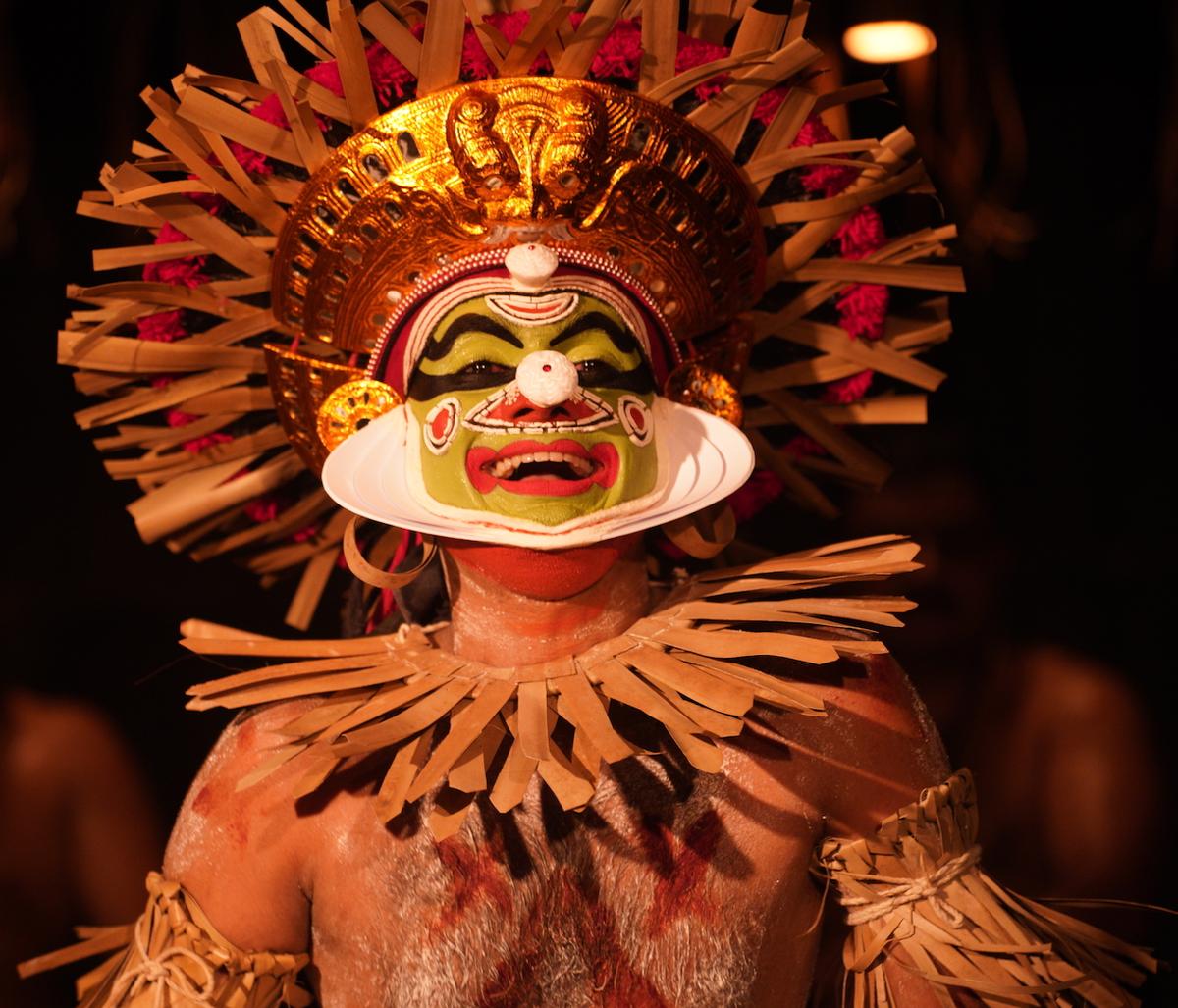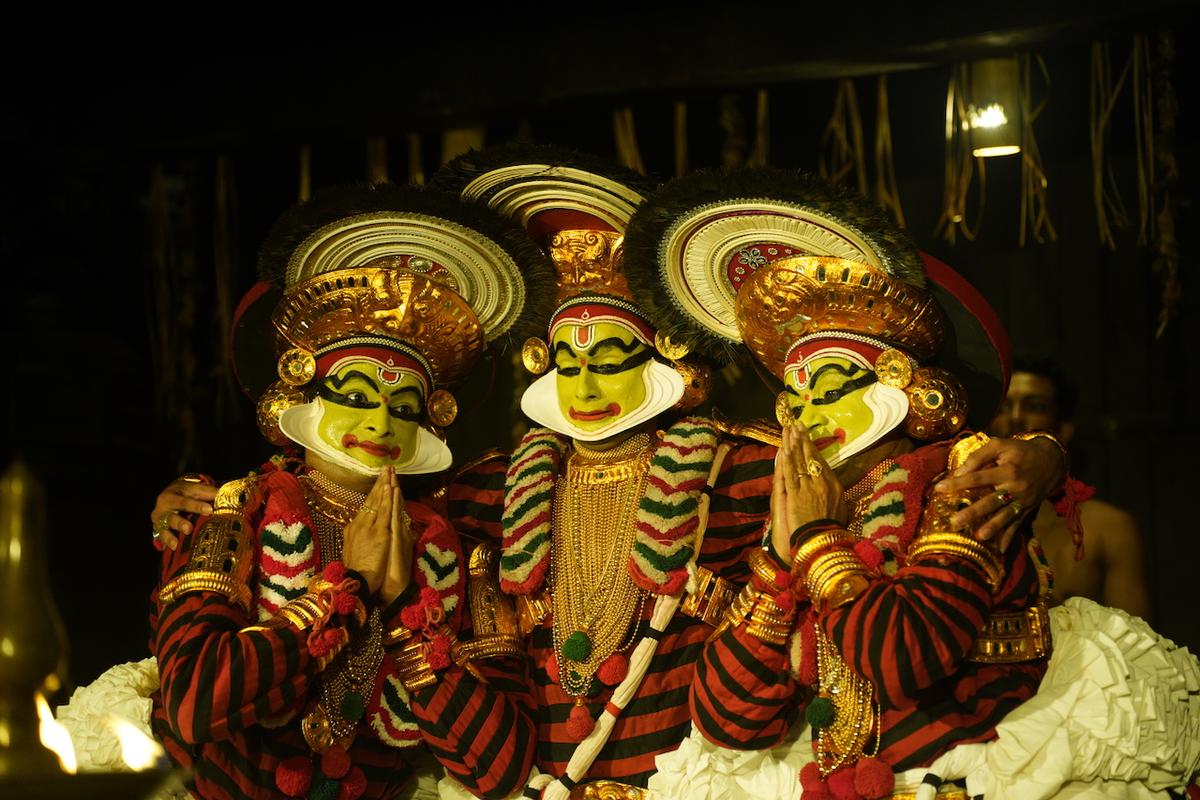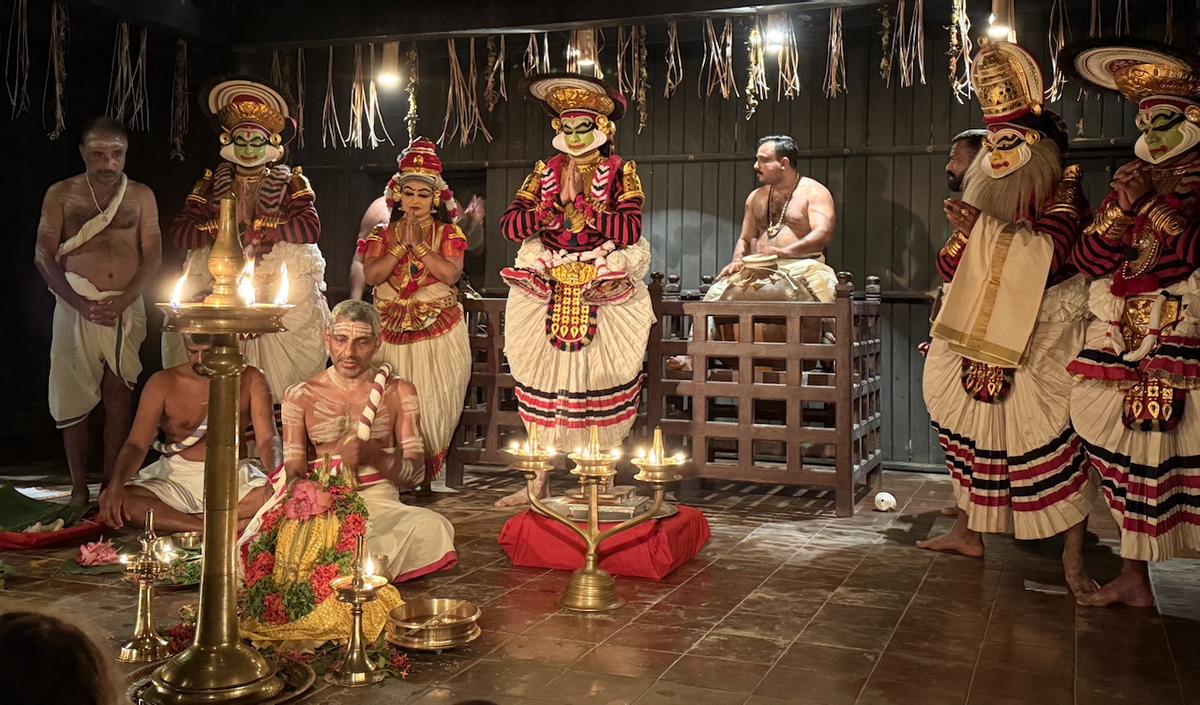Koodiyattam exponent and teacher Margi Madhu’s two new directorial ventures, presented at the annual Nepathya Koodiyattam festival in August, stood out as interesting innovations. They revealed how imaginative touches can enliven a centuries-old art form renowned for its strict adherence to structure and convention.
Nepathya presented an elaborate version of Mathavilasa Prahasanam (Dance of a Drunken Sport) — a 7th Century farce, loaded with sarcasm and wit, written by the Kancheepuram-based Pallava king, Mahendra Vikrama — and Atavyankam, the Fourth Act of Bhasa’s Pratima Natakam.
Mathavilasam has been performed for centuries, but only at temples as an offering, where only two couplets from the original text are used. A longer attaprakaram or actor’s manual was first composed by P.K. Narayanan Nambiar in the 1990s. The current version, directed by Madhu, expands on this by including certain parts that have been left out and introducing Malayalam for the dialogues of some key Sanskrit and Prakrit-speaking characters.
The plot revolves around the drunken antics of Sathyasoma, a kapali and an unorthodox Saivite mendicant who seeks god through begging, dancing and drinking. His companion Devasoma, along with the loss and recovery of their kapalam or skull-bowl, drive the narrative. An inebriated Sathyasoma suspects the Buddhist monk Nagasena of stealing his bowl, but after a heated exchange, he discovers it was taken away by a dog. The recovery of the skull-bowl also involves Babhrukalpan, a Saivite of the moderate Pasupata order, and a madman figure.
Though the play is over a thousand years old, its values — intolerance, hypocrisy, and the primacy of ritual over the spiritual — remain relevant.
David Shulman, an Indologist and Sanskrit scholar, says: “The text is witty and full of vitality. The play is interesting because of the way it embodies the early crystallisation of the tradition, and also because of its conceptual and philosophical contents and highly dramatic conclusion. Madhu has made the text come alive and showed us the deeper meanings it offers us.”

Nepathya Sreehari Chakyar as Babhrukalpan in Mathavilasam
| Photo Credit:
T.K. Achuthan
These deeper meanings are what Sanskrit scholar, K.V. Vasudevan, referred to in a paper presented at the festival. He suggested that the arguments, though seemingly superficial, can be interpreted in different ways. For instance, Babhrukalpan in the play is not a lunatic but a liberated soul. Citing several examples, he said the choice of words and characters are all a device of an intelligent king to remind his people that the ultimate aim of the supreme being, symbolised by the kapala, should not be lost while being caught-up in mere rituals. And he chose the farce as his vehicle so that the message gets carried to both the intelligentsia and the layman.
“Mathavilasam is a prahasanam or a farce and it naturally deals with everyday lives. To translate that into Koodiyattam and at the same time retain its humour and wit, was not easy,” says Madhu.
Sutradhara’s Nirvahanam or retrospective sets out the context of the story using verses from Kalidasa’s Kumarasambhavam. The story, starting from Shiva’s penance, Kamadeva turning to ashes from his fury, and the killing of demon Taraka was presented by Madhu in an impressive solo act, lasting over four hours.
The scene that introduces Kapali and Devasoma, played by Madhu and Indu G, was memorable for its drunken dance and dialogues, interspersed with some serious descriptive acting segments.
The last day of the play belonged to Nepathya’s three young actors. The arguments and the quick ripostes between kapali (played by Nepathya Yadukrishnan) and the Buddhist monk (played by Nepathya Rahul Chakyar in Malayalam) were spirited and enjoyable. Though at times the banter did slip into slapstick, it was Babhrukalpan (played by Nepathya Sreehari Chakyar) who stole the show in a brief but powerful performance.

Rama (Rahul Chakyar) flanked by Lakshmana (Nepathya Yadukrishnan) and Margi Madhu (Bharata) in Atavyankam
| Photo Credit:
T.K. Achuthan
Emotional Bharata
The festival was back to the familiar territory of the Ramayana for the second play, presented over three days. The gist of Act 4 of Bhasa’s Pratimanatakam, which has not been performed in at least 300 years, was Bharata’s emotional encounter with Rama, Lakshmana and Sita in the forest. What stood out here was ‘Paduka Pattabhisheka’.

‘Paduka Pattabhisheka’ in Atavyankam
| Photo Credit:
T.K. Achuthan
Madhu says an old kramadeepika (performance manual) prescribes an actual temple priest to conduct the ritual. To ensure that the ceremony merges seamlessly into the drama, Madhu invited amateur Kathakali artist and a professional priest, Hari Nelliyode, to be the priest in the play. That created the right stage effect and the ritual, combined with the theatrical, made for an unforgettable scene.
Published – September 09, 2025 05:57 pm IST






















